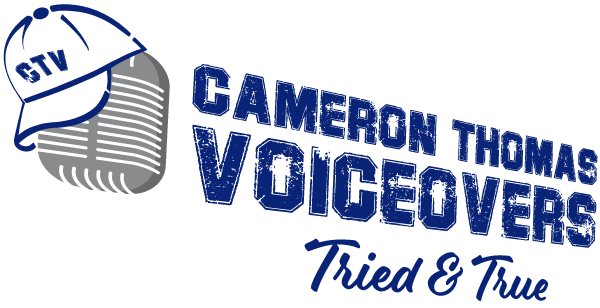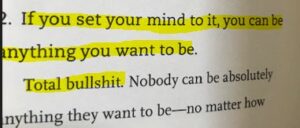So you have your voiceover or voice acting business set up. You have your training done, demos recorded, website up and running, and you’re ready for auditions. Obviously the most critical factor for being hired is your voice. You may have recorded the best audition but before you send it off, there is one thing that many folks seem to miss which can cost you the job. One of the most critical aspects of being a successful voice talent is the ability to follow instructions and direction meticulously. While the quality of one’s voice is undeniably the primary factor in securing jobs, the ability to adhere to specific guidelines and project details can significantly influence a voice talent’s reputation and longevity in the industry. Follow these instructions for auditions and understand and implement project details when hired.
Importance of Following VO Audition Instructions
Audition directions often encompass various elements, such as the vocal style required, the slating of auditions, the number of reads to provide, how to label audition files, and the proper channels for submission. Some project castings may not have much direction, if any at all. But for for agents and casting directors, their audition review process is more involved. Think of it from their perspective. They have to review dozens or hundreds of auditions, so they need to narrow things down. Audition instructions are specific, sometimes numerous, and always required. The ability to follow instructions is paramount or else your audition gets tossed.
Vocal Style
Casting directors often specify the desired vocal style in the audition instructions. Whether the client is looking for a warm and friendly tone, a professional and authoritative voice, or a playful and animated delivery, understanding and executing these nuances is crucial. Voice talent must thoroughly comprehend these directions and deliver a performance that aligns with the client’s vision. Failure to capture the intended style can result in being overlooked for the role, regardless of vocal quality.
Slating Voice Over Auditions
To slate, or not to slate. That is the question. Slating your name all depends on the client. Slating helps casting directors easily identify and categorize auditions. When they need to review dozens or hundreds of auditions, they need consistency in their auditions to make their assessment easier. Some may want a slate at the beginning or the end. Some may want a bit more info about you in the slate. If the audition does not mention slating, it is generally acceptable practice to include it. But keep it short, like your name and number of takes. However, some castings specifically ask for NO slating. If you see that note in highlighted bold, don’t do it! Neglecting to slate correctly or failing to slate altogether will disrupt the client audition review process. If they get frustrated, your audition may end up in the trash bin.
Number of Voiceover Reads
Casting directors might request multiple reads to gauge a voice talent’s range and versatility. Instructions might specify providing two or three different takes, each with a slight variation in tone or delivery. Adhering to this request showcases the talent’s ability to interpret and deliver direction, demonstrating flexibility and adaptability.
File Labeling and Submitting Voiceover Files
In all cases with agency auditions, audition files often need to be labeled in a particular format. Yes, this means dotting your ‘i’s’ and crossing your ‘t’s’. Did you add a dash instead of an underscore? Did you accidentally add a space in the label? This systematic approach helps casting directors manage numerous submissions efficiently. Can you imagine looking at folder of hundreds of files and each one is labeled differently? How would you like to sift through all of those and figure out whose audition is whose?
Additionally, auditions must be submitted through specified channels, whether via email, an online portal, or through an agency. Ignoring these details can result in a submission being lost, overlooked, or discarded, regardless of the talent’s performance quality. Also, many clients may be protective of their communication channels. I have heard of some talent ignoring client requests for preferred communication and going rogue through other channels. That is certainly not cool. Breaking communication protocol risks ruining the reputation of the agent of casting platform – keep doing that and you will likely be asked to leave.
Importance of Following Voice Project Instructions When Hired
If you make it through the audition process and get hired, congratulations! But it doesn’t stop there. Once hired, you must follow detailed project instructions. Projects can vary greatly. Some are fairly straightforward with minimal direction and steps. Record, submit, invoice and get paid. However, some may be much more involved. Your ability to manage and execute these details proficiently is crucial for client satisfaction and project success.
Vocal Direction
Every project comes with its unique set of vocal directions. Whether it’s a commercial, e-learning, corporate narration, or any other type of voice-over work, understanding and delivering the desired vocal style and tone is essential. Clients often provide specific feedback and direction during the recording process. Voice talent must be receptive to this feedback and able to adjust their performance accordingly. This responsiveness ensures the final product aligns with the client’s expectations and requirements.
File Management
In many projects, especially those involving e-learning modules, audiobooks, or video games, there can be dozens, if not hundreds of individual audio files. Properly labeling these files according to the client’s instructions is vital. Mislabeling files can create significant challenges for producers and audio engineers, leading to delays and additional work. For example, files might need to be labeled with specific codes or titles that correspond to particular sections of the project. Ensuring accuracy in this area helps streamline the workflow and maintain project organization.
Acknowledging and Correcting Mistakes
It may seem that I am writing this from a perch of perfection. Despite best efforts, mistakes can happen. And I have made them. Even when I thought I read all of the instructions, sometimes my enthusiasm got the better of me and I missed something. Maybe it was a script mistake. Maybe it was a file mislabel. But what I have done and will always continue to do is take ownership of my mistake. Accountability fosters trust and reliability (part of the “Tried & True” brand). A key to maintaining long-term relationships is not dropping the ball or shifting blame. Part of being a professional is also correcting errors quickly and to take steps to prevent recurrence. I will always restore my quality of work to regain client satisfaction.
Conclusion
When you go through all of the effort of training, building a studio, recording demos, hopefully you find opportunities to audition for work. With all of the focus on perfecting your voice, do not let simple oversights in submitting an audition ruin your hard work. It is easy to overlook a small detail of misusing a slate, or labeling an audio file. You may be surprised by how many folks do just that and torpedo their chance of getting hired and really ticking off agents and casting directors. Don’t make their life any harder than it has to be and ensure that you follow the instructions for all of your auditions and voiceover projects.
Check out the video version of this blog.

 Have you heard that you can, “be anything you want to be” and thought to yourself, not really?
Have you heard that you can, “be anything you want to be” and thought to yourself, not really?







 engineer. (
engineer. ( My emails to folks in project management are pretty lengthy; however every bit of info is there for a reason and speaks to common questions and issues that come up. I know it is a lot but I’m happy to clarify things. To my earlier point about detail, I do understand when folks miss something.
My emails to folks in project management are pretty lengthy; however every bit of info is there for a reason and speaks to common questions and issues that come up. I know it is a lot but I’m happy to clarify things. To my earlier point about detail, I do understand when folks miss something. Here is an example. During a leadership training course years ago, the speaker told us a story about how he was hiring someone for a position at his company. After multiple interview sessions, he finalized his preferred candidate. Instead of offering him the position, he said they selected someone else. Why? He wanted to see what their reaction to bad news. If the person was understanding, albeit disappointed, and cordial, then perhaps that person might have the emotional intelligence to handle difficult situations at work. In that case, they may be the right choice. The manager would reach back out to the candidate to say that things changed, the position reopened, and was available.
Here is an example. During a leadership training course years ago, the speaker told us a story about how he was hiring someone for a position at his company. After multiple interview sessions, he finalized his preferred candidate. Instead of offering him the position, he said they selected someone else. Why? He wanted to see what their reaction to bad news. If the person was understanding, albeit disappointed, and cordial, then perhaps that person might have the emotional intelligence to handle difficult situations at work. In that case, they may be the right choice. The manager would reach back out to the candidate to say that things changed, the position reopened, and was available. guy speaking into a microphone. I didn’t have a tagline at the beginning but I chose the college/sporty font to represent the youthful/young-adult aspect of my voice.
guy speaking into a microphone. I didn’t have a tagline at the beginning but I chose the college/sporty font to represent the youthful/young-adult aspect of my voice. His daughter
His daughter